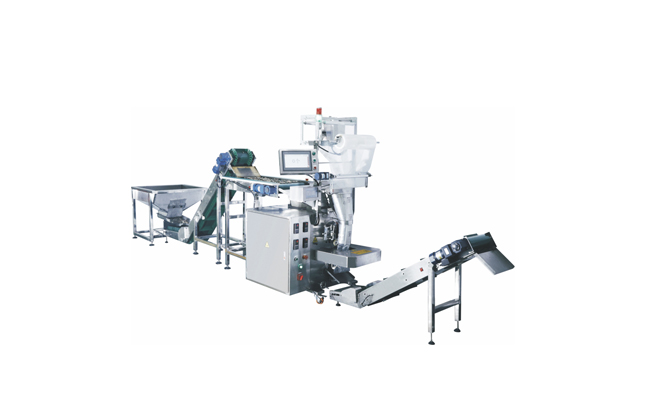
Date | 2023-05-13 04:49:29
In the fast-paced world of manufacturing and production, efficient packaging solutions are crucial to meet the demands of consumers and businesses alike. Package machinery plays a vital role in automating the packaging process, ensuring speed, accuracy, and consistency. This article delves into the technical aspects of package machinery, exploring its components, functionalities, and benefits.
Introduction
Package machinery refers to a range of equipment designed to streamline the packaging process across various industries. From food and beverage to pharmaceuticals and consumer goods, package machinery caters to the specific requirements of each sector. Its primary objective is to automate packaging tasks, optimizing productivity and minimizing human error.
Components of Package Machinery
a. Conveyors: Conveyors are an essential component of package machinery, facilitating the movement of products along the packaging line. They ensure a smooth flow of materials and enable seamless transitions between different stages of the packaging process.
b. Filling Systems: Filling systems accurately dispense products into containers, such as bottles, jars, or pouches. These systems utilize advanced technologies like volumetric or gravimetric measurements to achieve precise filling quantities, minimizing waste and maximizing efficiency.
c. Sealing Equipment: Sealing plays a crucial role in maintaining product integrity and extending shelf life. Package machinery incorporates various sealing mechanisms, such as heat sealing, induction sealing, or adhesive sealing, depending on the packaging requirements and product characteristics.
d. Labeling Systems: Labeling machinery applies labels to packages, ensuring clear identification, branding, and regulatory compliance. Advanced labeling systems can handle multiple label types, including self-adhesive, pressure-sensitive, or shrink sleeves, with high accuracy and speed.
e. Wrapping and Bundling Machines: Wrapping and bundling machines are utilized for products that require secondary packaging, such as shrink wrapping or stretch wrapping. These machines secure and protect multiple items, enhancing product stability during transportation and storage.
Functionalities of Package Machinery
a. Automation: Package machinery significantly reduces manual labor by automating repetitive packaging tasks. This automation leads to increased productivity, improved consistency, and reduced production costs.
b. Speed and Efficiency: Package machinery operates at high speeds, enabling manufacturers to meet demanding production targets. The precise and rapid execution of packaging tasks ensures that products are packaged quickly and efficiently.
c. Quality Control: Package machinery incorporates built-in quality control mechanisms to detect packaging errors, such as incorrect labels, missing components, or faulty seals. This ensures that only properly packaged products reach the market, reducing customer complaints and enhancing brand reputation.
d. Flexibility: Modern package machinery is designed to handle a wide range of product sizes, shapes, and materials. The flexibility of these systems allows manufacturers to adapt to changing market demands and efficiently package diverse product portfolios.
Benefits of Package Machinery
a. Increased Productivity: Package machinery streamlines the packaging process, eliminating bottlenecks and reducing downtime. This increased productivity enables manufacturers to meet customer demands efficiently and achieve higher production volumes.
b. Cost Savings: By automating packaging tasks, package machinery reduces labor costs and minimizes material waste. Additionally, the optimized packaging process leads to better inventory management, avoiding overstocking or understocking situations.
c. Improved Product Quality: The precision and consistency of package machinery contribute to the overall quality of packaged products. Accurate filling, sealing, and labeling ensure that products are well-presented, leading to customer satisfaction and repeat business.
d. Enhanced Safety: Package machinery incorporates safety features and adheres to industry standards to protect workers from potential hazards. This focus on safety minimizes the risk of accidents and injuries in the packaging environment.
In conclusion, package machinery revolutionizes the packaging process by automating tasks and optimizing efficiency. With its diverse components, functionalities, and benefits, package machinery is an indispensable asset for manufacturers aiming toimprove productivity, reduce costs, and enhance product quality. From conveyors and filling systems to sealing equipment and labeling machinery, each component plays a crucial role in ensuring the smooth flow of products through the packaging line.
The automation provided by package machinery eliminates the need for manual labor, increasing productivity and minimizing human error. The high-speed operation of these machines enables manufacturers to meet demanding production targets and efficiently package large volumes of products. Additionally, the incorporation of quality control mechanisms ensures that only properly packaged products reach the market, enhancing customer satisfaction and brand reputation.
The flexibility of package machinery allows manufacturers to handle a wide range of product sizes, shapes, and materials. This adaptability enables businesses to respond to changing market demands and efficiently package diverse product portfolios.
The benefits of package machinery extend beyond productivity and efficiency. By automating packaging tasks, manufacturers can significantly reduce labor costs and minimize material waste. The optimized packaging process also leads to better inventory management, avoiding unnecessary stockpiling or shortages.
Moreover, package machinery contributes to improved product quality. The precision and consistency of filling, sealing, and labeling processes ensure that products are well-presented and meet customer expectations. This, in turn, fosters customer satisfaction and encourages repeat business.
Safety is another important aspect of package machinery. These machines incorporate safety features and adhere to industry standards to protect workers from potential hazards in the packaging environment. By prioritizing safety, manufacturers can create a secure working environment and minimize the risk of accidents or injuries.
In conclusion, package machinery is a critical component of modern manufacturing, enabling businesses to streamline the packaging process and achieve optimal efficiency. With its automation, speed, flexibility, and quality control mechanisms, package machinery offers numerous benefits, including increased productivity, cost savings, improved product quality, and enhanced safety. Embracing package machinery can give manufacturers a competitive edge in meeting the packaging demands of today's fast-paced markets.
